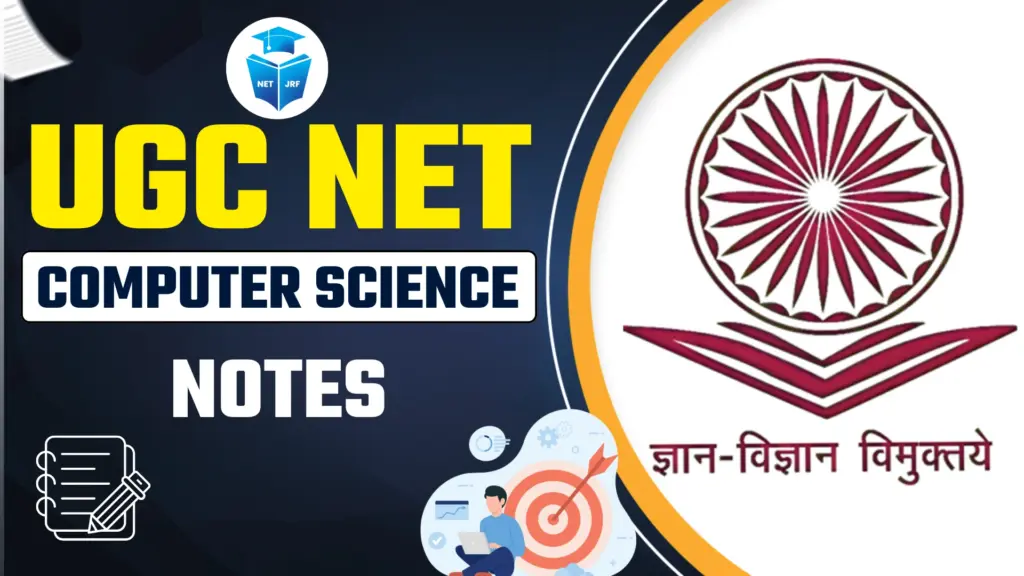The evolution of Religious and Philosophical Vedic Ideas in ancient India is a long and fascinating journey. It started with early rituals and worship and gradually led to deep philosophical discussions about life, reality, and the universe. This transformation influenced Hinduism and continues to shape Indian thought today.
Early Vedic Religion: The Roots of UGC NET Philosophy
The earliest form of Vedic religion dates back to around 1500 BCE when Indo-Aryans migrated to India. Their religious beliefs were centered around nature worship and sacrifices.
Key Features of Early Vedic Religion
| Aspect | Description |
| Deities | Worship of gods linked to natural forces like Indra (thunder), Agni (fire), and Varuna (water). |
| Rituals | Yajnas (fire sacrifices) were performed to please the gods for prosperity and protection. |
| Sacred Texts | The Rigveda, the oldest Vedic text, contained hymns dedicated to different deities. |
The main focus was on maintaining harmony between gods and humans through elaborate rituals.
Development of Vedic Texts UGC NET Exam’s Important Concepts
Over time, the religious texts expanded, leading to a deeper understanding of rituals, philosophy, and life’s purpose. The Vedic literature was divided into four main texts:
Four Vedas and Their Significance
| Veda | Main Focus |
| Rigveda | Hymns praising gods and nature. |
| Yajurveda | Ritual instructions for priests. |
| Samaveda | Melodic chants for religious ceremonies. |
| Atharvaveda | Magic spells and practical wisdom. |
These texts were further classified into Samhitas (hymns), Brahmanas (ritual guides), Aranyakas (meditative texts), and Upanishads (philosophical discussions). The Upanishads marked a major shift from rituals to deeper inquiries about life and existence.
Rise of Philosophical Schools: UGC NET Philosophy Syllabus Essentials
As people began questioning traditional rituals, new philosophical schools emerged, exploring concepts like reality, knowledge, and liberation.
Orthodox (Astika) Schools – Based on Vedic Teachings
| School | Key Idea |
| Samkhya | Explained the world through two realities: Purusha (spirit) and Prakriti (matter). |
| Yoga | Taught meditation and self-discipline for spiritual growth. |
| Nyaya | Focused on logic and reasoning to understand truth. |
| Vaisheshika | Believed everything in the world is made of tiny atoms. |
| Mimamsa | Emphasized the importance of rituals and Vedic traditions. |
| Vedanta | Explored the connection between the individual soul (Atman) and the supreme reality (Brahman). |
Heterodox (Nastika) Schools – Challenging Vedic Ideas
| School | Key Idea |
| Carvaka | Rejected Vedas and promoted materialism, arguing that only what can be seen and experienced is real. |
| Buddhism | Focused on overcoming suffering through Eightfold Path and Nirvana. |
| Jainism | Emphasized non-violence (Ahimsa) and spiritual self-discipline. |
These schools contributed to India’s intellectual diversity and laid the foundation for later Hindu and non-Hindu philosophies.
Major Philosophical Concepts: UGC NET Study Guide
During this period, several key ideas emerged that continue to shape Indian philosophy.
Core Philosophical Ideas
| Concept | Meaning |
| Atman and Brahman | The idea that the soul (Atman) is connected to the ultimate reality (Brahman). |
| Maya | The world is an illusion, and true reality lies beyond material existence. |
| Karma and Rebirth | A person’s actions determine their future lives. |
| Moksha | Liberation from the cycle of birth and death, leading to eternal peace. |
These ideas formed the backbone of Indian spiritual thought and remain central to Hinduism today.
Vedantic Schools: Different Interpretations of UGC NET Vedic Philosophy
As debates on the Upanishads grew, different interpretations led to new philosophical branches:
| School | Main Idea |
| Advaita Vedanta | Non-dualism: Everything is one; the soul and God are the same. |
| Dvaita Vedanta | Dualism: The soul and God are separate entities. |
| Vishishtadvaita | Qualified non-dualism: The soul is connected to God but retains its uniqueness. |
Each of these schools shaped religious and philosophical discussions for centuries.
Impact on Hindu Thought: UGC NET Modern Hinduism Topics
The evolution of Vedic religion and philosophy led to:
- Development of classical Hindu philosophy that combined rituals with deep spiritual thought.
- Integration of various traditions like Shaivism, Vaishnavism, and Shaktism.
- Continuous reinterpretation of texts to adapt to changing times.
Even today, these ideas influence modern Hindu practices, spirituality, and academic discussions.
The transformation of Vedic religion from simple fire sacrifices to deep philosophical debates highlights India’s rich intellectual heritage. From nature worship in the early Vedic period to the rise of profound philosophies like Advaita Vedanta, Indian thought has continuously evolved, shaping Hinduism and inspiring generations of thinkers.
For students preparing for the UGC NET exam, understanding this evolution is crucial, as it forms the foundation of Indian philosophy and religious studies.
Philosophical Ideas in Later Vedic Texts UGC NET Study Guide
As the Vedic tradition evolved, religious practices became more sophisticated, and deeper philosophical questions emerged. The Later Vedic period (1000–600 BCE) saw the development of new ideas about life, the universe, and human existence.
Shift from Rituals to Philosophy
In the Early Vedic period, religious life focused on yajnas (sacrificial rituals) to please gods and gain prosperity. However, in the Later Vedic period, people started questioning:
- What is the purpose of life?
- What happens after death?
- Is there a universal truth beyond rituals?
This shift led to the composition of the Upanishads, which are philosophical texts exploring spiritual wisdom.
Key Philosophical Concepts in Later Vedic Texts
| Concept | Meaning & Importance |
| Atman | The individual soul that is eternal and divine. |
| Brahman | The ultimate reality or supreme cosmic power. |
| Moksha | Liberation from the cycle of birth and rebirth. |
| Karma | Actions determine one’s future experiences. |
| Dharma | The duty and moral order of the universe. |
| Maya | The illusion that keeps humans trapped in worldly desires. |
The Upanishads emphasized meditation, self-realization, and the pursuit of true knowledge over ritualistic practices. These ideas later influenced Hinduism, Buddhism, and Jainism.
Influence of Later Vedic Philosophy on UGC NET Topics
- Growth of Vedanta schools (Advaita, Dvaita, and Vishishtadvaita).
- Formation of key ethical principles in Indian philosophy.
- Development of Yoga and spiritual disciplines as paths to enlightenment.
These philosophical ideas remain essential in Indian religious and academic thought, making them important for UGC NET Philosophy and Religious Studies.
Introduction of Iron Technology and Its Impact UGC NET Indian History
The Later Vedic period was also marked by significant technological and social changes. One of the most important developments was the introduction of iron technology, which revolutionized agriculture, warfare, and society.
How Iron Technology Emerged in India
- Before iron: People used copper and bronze tools, which were less effective for farming and construction.
- After iron: Around 1000 BCE, iron tools and weapons became widely used, leading to major transformations.
Impact of Iron Technology on Society
| Area | Changes Brought by Iron Technology |
| Agriculture | Stronger plows helped expand farming, leading to surplus food. |
| Urbanization | Growth of cities due to increased trade and economic activities. |
| Warfare | Iron weapons made armies more powerful and led to territorial expansion. |
| Political Systems | Rise of kingdoms and the weakening of tribal societies. |
| Social Structure | The Varna (caste) system became more rigid as society grew complex. |
Iron tools made it easier to clear forests, leading to the expansion of settlements in the Gangetic plains, where powerful kingdoms like Magadha emerged.
How Iron Technology Shaped Later Vedic Society
- Agricultural surplus supported larger populations and new occupations.
- Rise of large kingdoms led to increased administration and taxation systems.
- Caste divisions became stronger, as different groups specialized in various jobs.
These changes laid the foundation for India’s first major political empires, including the Maurya and Gupta dynasties.
The Later Vedic period was a time of intellectual and technological transformation. Philosophically, the Upanishads questioned the meaning of life, karma, and liberation. Technologically, the use of iron revolutionized agriculture, warfare, and governance, shaping India’s historical and social structure.
For UGC NET aspirants, understanding these changes is crucial, as they form the backbone of Indian philosophy, history, and cultural studies.
Conclusion
The journey of Vedic religious practices and philosophical ideas showcases India’s rich intellectual heritage. From the early fire sacrifices and nature worship of the Rigvedic period to the profound spiritual discussions of the Upanishads, Indian thought continuously evolved. The introduction of iron technology further transformed society, leading to the growth of agriculture, urbanization, and powerful kingdoms like Magadha.
For UGC NET aspirants, understanding these philosophical and historical developments is essential, as they form the foundation of Indian philosophy, religious studies, and history. The Vedic period not only shaped Hinduism but also influenced Jainism, Buddhism, and later Indian philosophical traditions.
Evolution of Vedic Religious Practices and Philosophy FAQs
What was the main focus of Early Vedic religion?
Early Vedic religion focused on polytheistic worship, fire sacrifices (yajnas), and maintaining harmony with gods to ensure prosperity and protection.
How did Later Vedic texts influence Indian philosophy?
Later Vedic texts, especially the Upanishads, shifted focus from rituals to deep philosophical questions, introducing concepts like Atman, Brahman, karma, and moksha.
What were the key philosophical schools of ancient India?
Indian philosophy was divided into Orthodox (Astika) schools like Vedanta, Samkhya, Yoga, and Nyaya, and Heterodox (Nastika) schools like Carvaka, Buddhism, and Jainism.
How did iron technology impact Later Vedic society?
The use of iron tools improved agriculture, expanded cities, strengthened armies, and led to the rise of large kingdoms like Magadha, shaping Indian civilization.
Why is the study of Vedic philosophy important for UGC NET?
Vedic philosophy is a crucial part of Indian philosophy and religious studies, making it an important topic for UGC NET History and UGC NET Philosophy exams.














